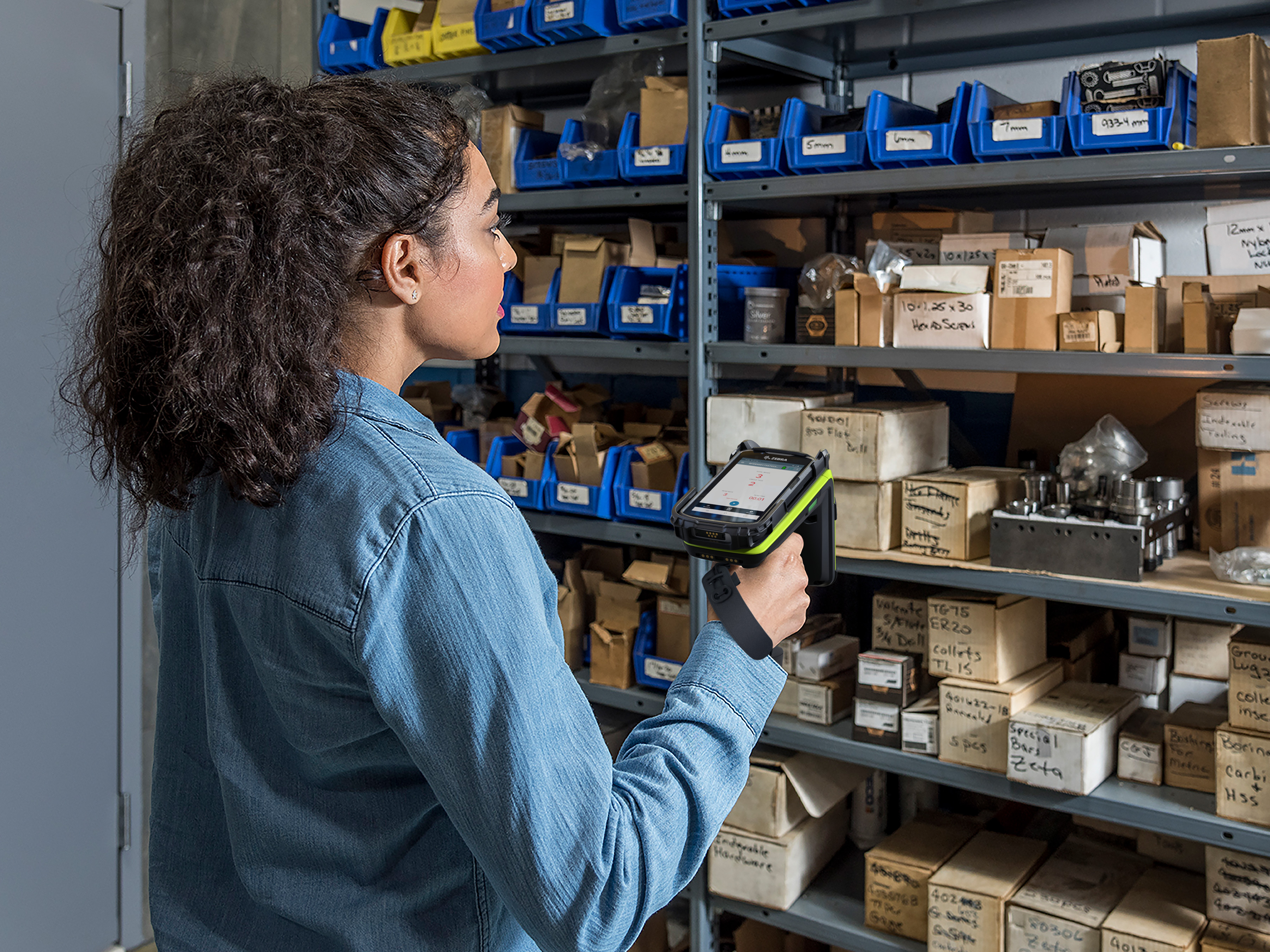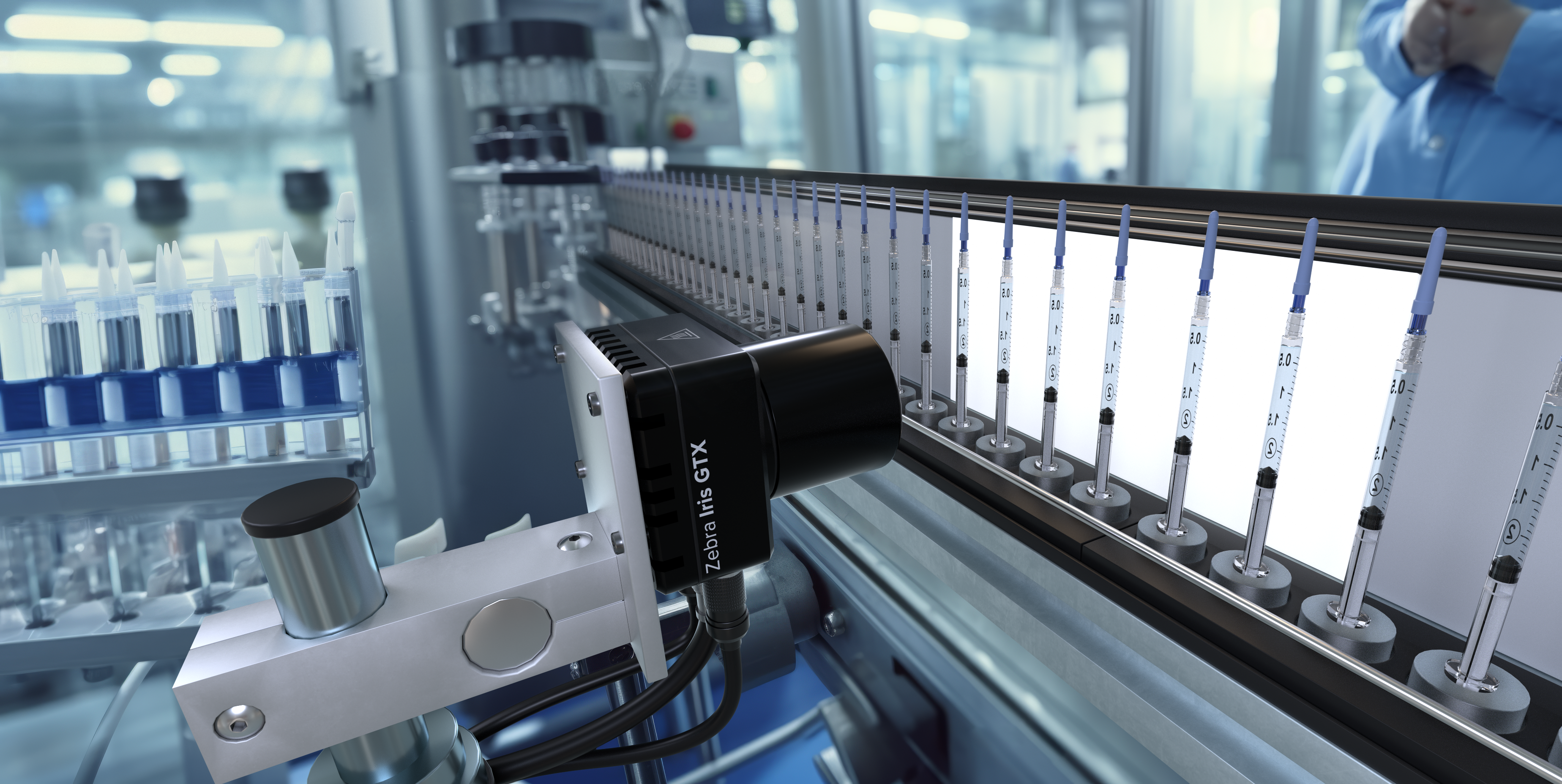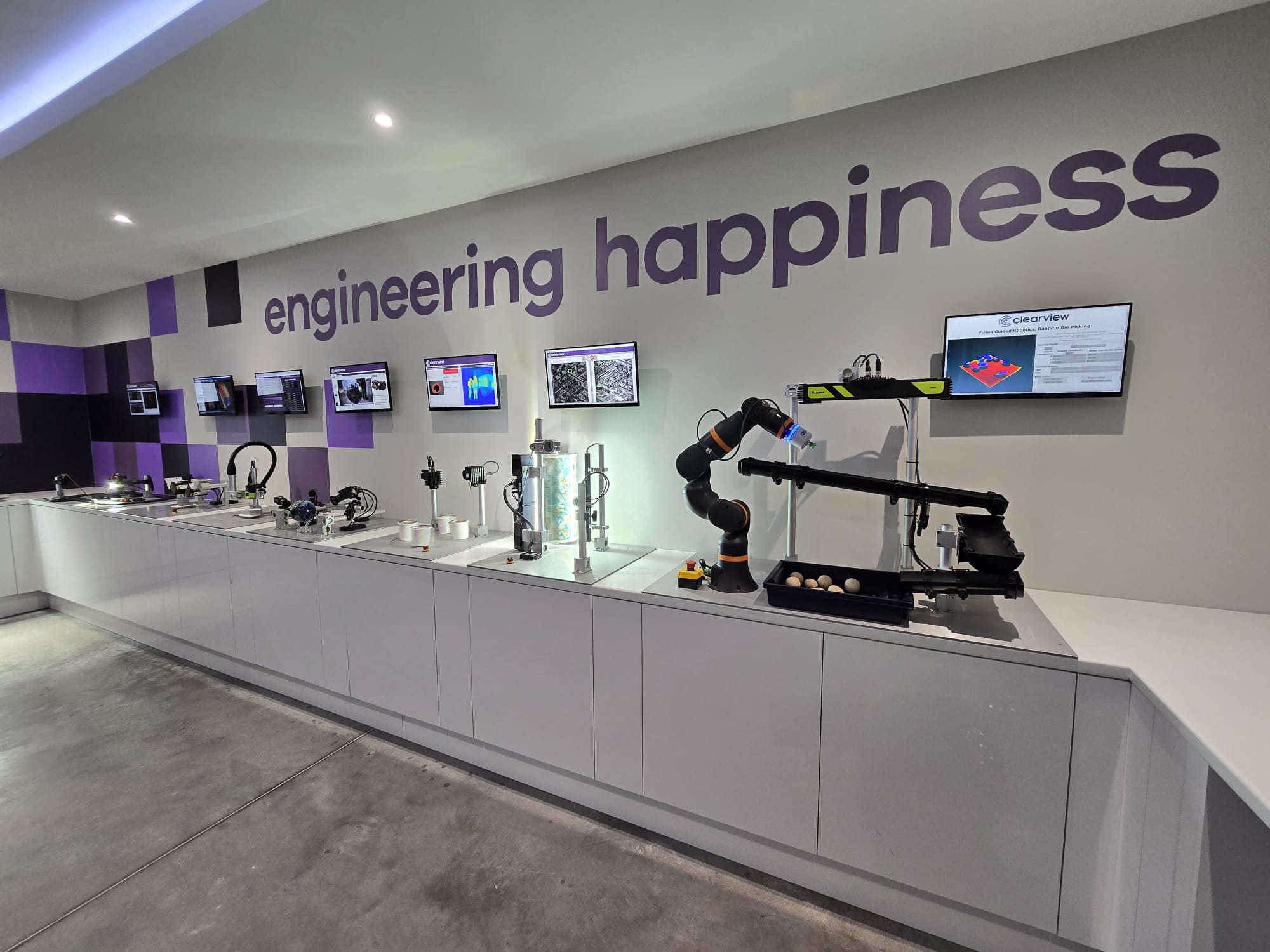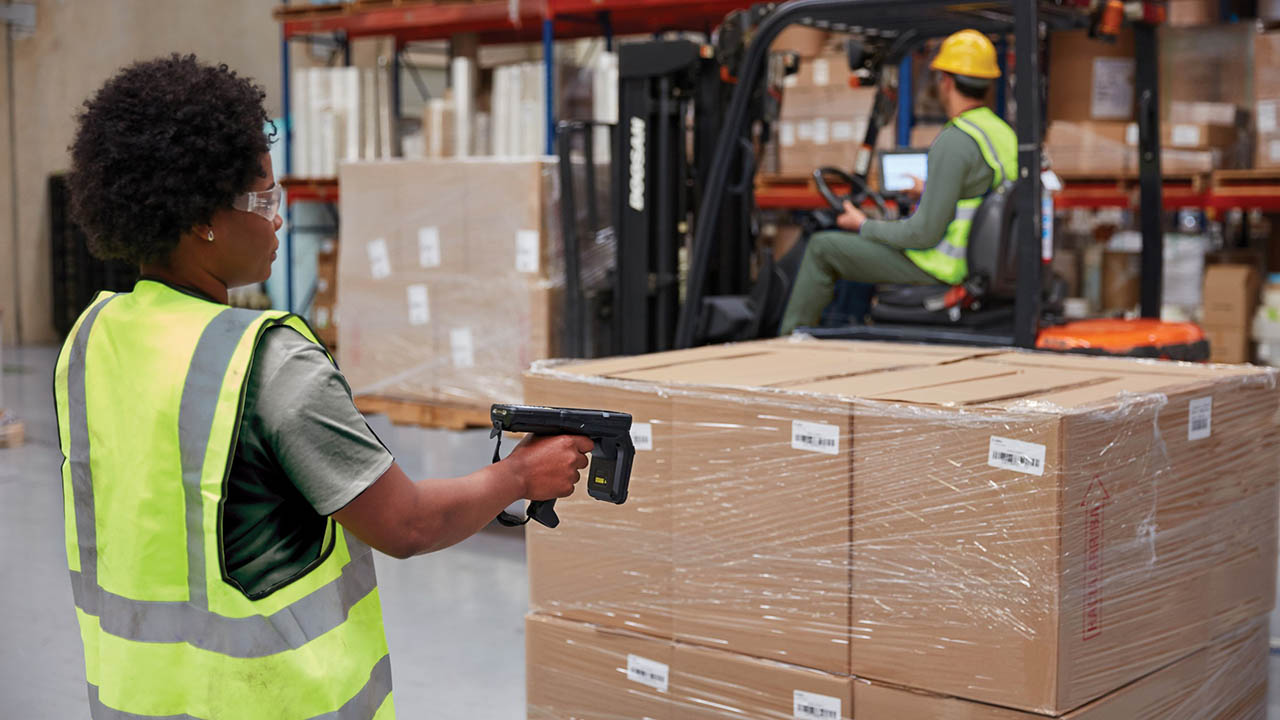Transform retail operations with Zebra’s retail technology solutions, featuring hardware and software for improving inventory management and empowering teams.
Streamline operations with Zebra’s healthcare technology solutions, featuring hardware and software to improve staff collaboration and optimize workflows.
Enhance processes with Zebra’s manufacturing technology solutions, featuring hardware and software for automation, data analysis, and factory connectivity.
Zebra’s transportation and logistics technology solutions feature hardware and software for enhancing route planning, visibility, and automating processes.
Learn how Zebra's public sector technology solutions empower state and local governments to improve efficiency with asset tracking and data capture devices.
Zebra's hospitality technology solutions equip your hotel and restaurant staff to deliver superior customer and guest service through inventory tracking and more.
Zebra's market-leading solutions and products improve customer satisfaction with a lower cost per interaction by keeping service representatives connected with colleagues, customers, management and the tools they use to satisfy customers across the supply chain.
Empower your field workers with purpose-driven mobile technology solutions to help them capture and share critical data in any environment.
Zebra's range of Banking technology solutions enables banks to minimize costs and to increase revenue throughout their branch network. Learn more.
Zebra's range of mobile computers equip your workforce with the devices they need from handhelds and tablets to wearables and vehicle-mounted computers.
Zebra's desktop, mobile, industrial, and portable printers for barcode labels, receipts, RFID tags and cards give you smarter ways to track and manage assets.
Zebra's 1D and 2D corded and cordless barcode scanners anticipate any scanning challenge in a variety of environments, whether retail, healthcare, T&L or manufacturing.
Zebra's extensive range of RAIN RFID readers, antennas, and printers give you consistent and accurate tracking.
Choose Zebra's reliable barcode, RFID and card supplies carefully selected to ensure high performance, print quality, durability and readability.
Zebra's location technologies provide real-time tracking for your organization to better manage and optimize your critical assets and create more efficient workflows.
Zebra's rugged tablets and 2-in-1 laptops are thin and lightweight, yet rugged to work wherever you do on familiar and easy-to-use Windows or Android OS.
With Zebra's family of fixed industrial scanners and machine vision technologies, you can tailor your solutions to your environment and applications.
Zebra’s line of kiosks can meet any self-service or digital signage need, from checking prices and stock on an in-aisle store kiosk to fully-featured kiosks that can be deployed on the wall, counter, desktop or floor in a retail store, hotel, airport check-in gate, physician’s office, local government office and more.
Adapt to market shifts, enhance worker productivity and secure long-term growth with AMRs. Deploy, redeploy and optimize autonomous mobile robots with ease.
Discover Zebra’s range of accessories from chargers, communication cables to cases to help you customize your mobile device for optimal efficiency.
Zebra's environmental sensors monitor temperature-sensitive products, offering data insights on environmental conditions across industry applications.
Enhance frontline operations with Zebra’s AI software solutions, which optimize workflows, streamline processes, and simplify tasks for improved business outcomes.
Zebra Workcloud, enterprise software solutions boost efficiency, cut costs, improve inventory management, simplify communication and optimize resources.
Keep labor costs low, your talent happy and your organization compliant. Create an agile operation that can navigate unexpected schedule changes and customer demand to drive sales, satisfy customers and improve your bottom line.
Drive successful enterprise collaboration with prioritized task notifications and improved communication capabilities for easier team collaboration.
Get full visibility of your inventory and automatically pinpoint leaks across all channels.
Reduce uncertainty when you anticipate market volatility. Predict, plan and stay agile to align inventory with shifting demand.
Drive down costs while driving up employee, security, and network performance with software designed to enhance Zebra's wireless infrastructure and mobile solutions.
Explore Zebra’s printer software to integrate, manage and monitor printers easily, maximizing IT resources and minimizing down time.
Make the most of every stage of your scanning journey from deployment to optimization. Zebra's barcode scanner software lets you keep devices current and adapt them to your business needs for a stronger ROI across the full lifecycle.
RFID development, demonstration and production software and utilities help you build and manage your RFID deployments more efficiently.
RFID development, demonstration and production software and utilities help you build and manage your RFID deployments more efficiently.
Zebra DNA is the industry’s broadest suite of enterprise software that delivers an ideal experience for all during the entire lifetime of every Zebra device.
Advance your digital transformation and execute your strategic plans with the help of the right location and tracking technology.
Boost warehouse and manufacturing operations with Symmetry, an AMR software for fleet management of Autonomous Mobile Robots and streamlined automation workflows.
The Zebra Aurora suite of machine vision software enables users to solve their track-and-trace, vision inspection and industrial automation needs.
Zebra Aurora Focus brings a new level of simplicity to controlling enterprise-wide manufacturing and logistics automation solutions. With this powerful interface, it’s easy to set up, deploy and run Zebra’s Fixed Industrial Scanners and Machine Vision Smart Cameras, eliminating the need for different tools and reducing training and deployment time.
Aurora Imaging Library™, formerly Matrox Imaging Library, machine-vision software development kit (SDK) has a deep collection of tools for image capture, processing, analysis, annotation, display, and archiving. Code-level customization starts here.
Aurora Design Assistant™, formerly Matrox Design Assistant, integrated development environment (IDE) is a flowchart-based platform for building machine vision applications, with templates to speed up development and bring solutions online quicker.
Designed for experienced programmers proficient in vision applications, Aurora Vision Library provides the same sophisticated functionality as our Aurora Vision Studio software but presented in programming language.
Aurora Vision Studio, an image processing software for machine & computer vision engineers, allows quick creation, integration & monitoring of powerful OEM vision applications.
Adding innovative tech is critical to your success, but it can be complex and disruptive. Professional Services help you accelerate adoption, and maximize productivity without affecting your workflows, business processes and finances.
Zebra's Managed Service delivers worry-free device management to ensure ultimate uptime for your Zebra Mobile Computers and Printers via dedicated experts.
Find ways you can contact Zebra Technologies’ Support, including Email and Chat, ask a technical question or initiate a Repair Request.
Zebra's Circular Economy Program helps you manage today’s challenges and plan for tomorrow with smart solutions that are good for your budget and the environment.
The Zebra Knowledge Center provides learning expertise that can be tailored to meet the specific needs of your environment.
Zebra has a wide variety of courses to train you and your staff, ranging from scheduled sessions to remote offerings as well as custom tailored to your specific needs.
Build your reputation with Zebra's certification offerings. Zebra offers a variety of options that can help you progress your career path forward.
Build your reputation with Zebra's certification offerings. Zebra offers a variety of options that can help you progress your career path forward.

The Real Reason Why So Many Companies See “Big Changes” Fall Flat – or Completely Fail to Deliver Benefits
Why is change so difficult, even when we can all agree that something needs to change?
Imagine working for a company that creates and sells technology to combat some of the toughest obstacles in business. Now imagine sitting with the customers and listening to them speak about their struggles, discussing customer expectations, and debating what they can do to meet the needs of the customer, their organization, and our planet. As a “solution provider,” you may think you have all the answers – that helping them accomplish every goal is simple. “You have a problem; we have a solution,” you might say before proceeding to tell them all about your technology’s capabilities and your team’s experience in similar situations. By the end of the conversation, everyone may feel confident that things will get better soon – that there’s a solid plan in place to meet everyone’s needs. And that’s why so many companies struggle, or completely fail, to achieve their goals.
Life would be great if it were as easy as ideating a solution – coming up with a “business improvement” strategy and plan to follow through across the entire organization. But it’s not. Most business issues expand into your broader eco-system and impact your partners, suppliers and, sometimes, customers. So, whatever plan you have to tackle those issues will likely require their acceptance and cooperation, too. Change is not just an inside job.
Unfortunately, what you might find is not everyone is as ready as you may be to make changes. In fact, we see this all the time when working with our customers to drive improvements in their operations.
Recently a team of Zebra employees were discussing opportunities with track and trace technology and noted how the new RFID tagging mandates of some retailers aren’t sitting well with farmers and food producers. Their customers and retail partners are wanting more information than ever before about the source of that food, how it was produced and handled, and the quality control measures used to protect consumer safety. They also want to help drive sustainability in the food industry and overall improvements in the supply chain, but that’s only possible if food items can be more effectively tracked and traced from farm or factory to fork. While the technology may exist to support these retail customer and partner needs, it doesn’t mean that everyone across that value chain is ready or willing to participate in the change required to meet these needs. There’s a cost to food producers that they may not be in a position to absorb. There are also changes required to their processes and systems, which require time, resources and retraining of employees. So, when retailers tell their suppliers that they must put RFID tags on every item or bin, it’s important that they commit to outside-in change management.
Likewise, any change you’re looking to make will only be possible with others’ participation. So, let’s talk about how you can get your partners, suppliers, customers, and other stakeholders to accept your research and requirements as a benefit versus a burden – for them, not just you.
What Outside-In Change Management Initiatives Might Look Like for Your Organization
Being change resistant can come down to many things and is a natural reaction of being human. It’s known that one of the top reasons for project failure is lack of change management. Therefore, many organizations today are investing in change management to varying degrees to help support the changes in their organizations and help their people succeed. But when it comes to changes that impact outside the organization, how does this even work?
Change management is much more than sending a memo telling someone what you need them to do or simply stating what is changing – or, in our example, issuing a new mandate requiring suppliers to follow new guidelines. If you want to be successful in your change, you must offer the right support to help others through the transition. There are many different philosophies you can follow for change management, but they all boil down to the same themes:
Creating awareness of the change.
Understanding the desire, or lack-thereof, for change.
Helping others to understand why the change is needed.
Fostering the change by ensuring those who need to support the change have the right skills and tools to be successful with the change.
Oh, and you can’t forget about reinforcement.
To elaborate further, we were recently talking to one of our solution teams about a sustainability project and learned the customer’s supply chain partners were tearing data loggers off packaging and throwing them away so the customer could not see what was happening. While the customer had sustainability goals they were trying to meet, the partner knew, or at least assumed, if the customer got the data, they would ask them to make changes.
Do you think the situation could have produced better results if change management principles had been applied to them? Do you think the supplier fully understood the impact their request had on their partners? Could the supplier have offered to help the partners better understand the importance of the supply chain performance analysis and subsequent changes, not just for them but also the Supplier? Could they have considered helping to contribute resources, training, or incentives that would relieve some of the burden on the partner to support the change?
You have to remember that whether working with your employees internally, or partners externally, we are all human and change resistance is natural.
Because no change management was applied in this situation, the investment the supplier had made in data loggers (for other performance tracking and reporting reasons) was literally being ripped off and thrown in the trash. So, the next time you’re looking to make changes and need the support of any external stakeholders, I encourage you to put a change management strategy together that focuses on this external group to help you achieve the desired benefits.
If you need help mapping your outside-in change management strategy and tactics, talk to your solution providers, partners and suppliers – those working with you to drive change and those most impacted by the changes. Assemble a team to:
Identify internal and external stakeholders.
Identify your goals, and make sure they align to your corporate goals. What needs to change and why?
Identify obstacles. What’s going to be required to make the change happen? Can you identify reasons people wouldn’t want to support it? How will the change be received?
Develop a good communication strategy. You need to bring people on the journey.
Make sure you’re investing in developing a good training strategy and if possible, have multiple delivery methods. Not everyone learns the same and not everyone may have the skills/abilities to effectively support the change.
Develop a support structure. Resistance is natural. Help others practically and emotionally adjust to the changes happening.
Make sure you can measure these things. Are your business results seeing the impact of the change?
You may also want to enlist the help of a third-party Professional Services team that specializes in change management. These consultants can ensure all voices all heard, all concerns addressed, and all potential risks considered and mitigated – to include resistance inside and outside your organization.
###
Related Reads:
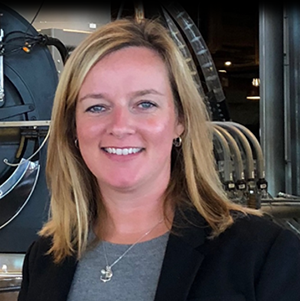
Deanna Self
Deanna Self serves as the Director of Digital Strategy for Global Supply Chain and Repair at Zebra Technologies, where she is tasked with shaping and driving digital initiatives to optimize the global supply chain and repair processes. Bringing over 25 years of experience in sales, operations, and IT to her role, Deanna is passionate about leveraging technology to improve efficiency and customer satisfaction. Her expertise and forward-thinking approach are integral to her leadership in transforming Zebra's supply chain digital landscape.
Prior to this role, Deanna was responsible for the oversight and management of Zebra’s largest order fulfillment distribution center. She also spent over two decades in the food and beverage industry before joining Zebra, where she started out owning and operating her own distributorship and eventually served as an IT executive for Nestle USA.
Deanna holds a Master of Business Administration (MBA) from Queen’s University of Charlotte and was named one of Supply and Demand Chain Executive 2021 Pros to Know. She is also a winner of the Supply and Demand Chain Executive 2021 Women of Supply Chain award.
Zebra Developer Blog
Zebra Developer BlogZebra Developer Blog
Are you a Zebra Developer? Find more technical discussions on our Developer Portal blog.
Zebra Story Hub
Zebra Story HubZebra Story Hub
Looking for more expert insights? Visit the Zebra Story Hub for more interviews, news, and industry trend analysis.
Search the Blog
Search the BlogSearch the Blog
Use the below link to search all of our blog posts.
Most Recent
Legal Terms of Use Privacy Policy Supply Chain Transparency
ZEBRA and the stylized Zebra head are trademarks of Zebra Technologies Corp., registered in many jurisdictions worldwide. All other trademarks are the property of their respective owners. ©2025 Zebra Technologies Corp. and/or its affiliates.

